Wild Bleeding Heart, Eastern Bleeding Heart, Turkey Corn - Dicentra eximia
|
Dicentra eximia - Wild Bleeding Heart, Eastern Bleeding Heart, Turkey Corn. Dicentra is a genus of about 20 species, of which 7 to 11 are found in North America, depending on which authorities you follow (and whether you include the highly cultivated Dicentra spectabilis species - which may now be classified as Lamprocapnos spectabilis.) Dicentra eximia is one of 3 or 4 species found in the eastern United States (Dicentra formosa may occasionally be found in the wild as a garden escapee, but those populations are unlikely to persist.)
While many publications refer to Dicentra eximia by the common name Turkey Corn, in my experience I've always heard it referred to as Bleeding Heart. Since the range of this lovely plant is on cliffs, rock outcrops, and rocky slopes of the Appalachian Mountains from New York south to South Carolina and Georgia, it is possible that it is called Turkey Corn in the northern part of its range. There are reports of disjunct populations in Illinois and Michigan, as well as outside of the Appalachians in other more eastern states. These are likely to be garden escapees rather than native or long-established naturalized populations since Dicentra eximia is a widely cultivated plant.
Synonyms: Fumaria eximia, Bicuculla eximia
Found in:
GA, IL, MA, MD, MI, NC, NJ, NY, OH, PA, SC, TN, VA, VT, WV, GS | 
Distribution of Dicentra eximia in the United States and Canada:
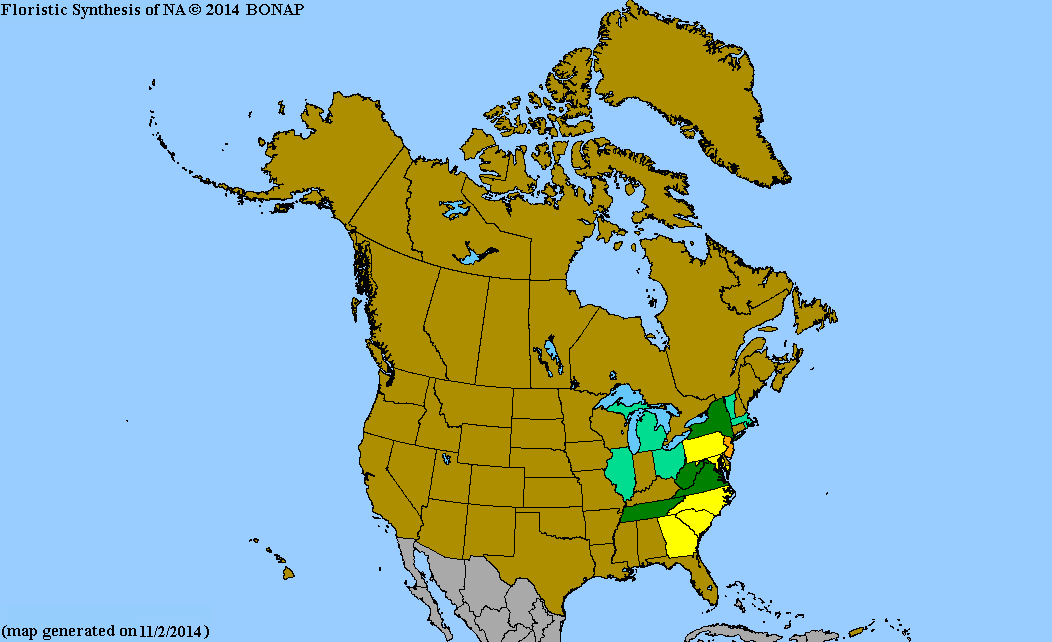
Map courtesy of The Biota of North America Program.
Map color key
Search Our Database: Enter any portion of the Scientific, Common Name, or both.
Do a general Google search of the entire site:
#ad
 Follow USWildflowers on Twitter
#ad
| | Site: Cherokee National Forest, Polk County, TN Date: 2016-April-13 | Photographer: Gerald C. Williamson
Nikon D7000
Tamron SP 90MM f/2.8 AF Macro | | Wild Bleeding Hearts range in color from pale pink to dark red, with the freshly-opening blossoms tending toward the darker color. Dicentra formosa - Pacific Bleeding Heart - is the western species most closely resembling D. eximia. The curved part of the outer petals are shorter in Pacific Bleeding Heart, giving the flower even more of a heart-shape than that of the eastern Wild Bleeding Heart. | | 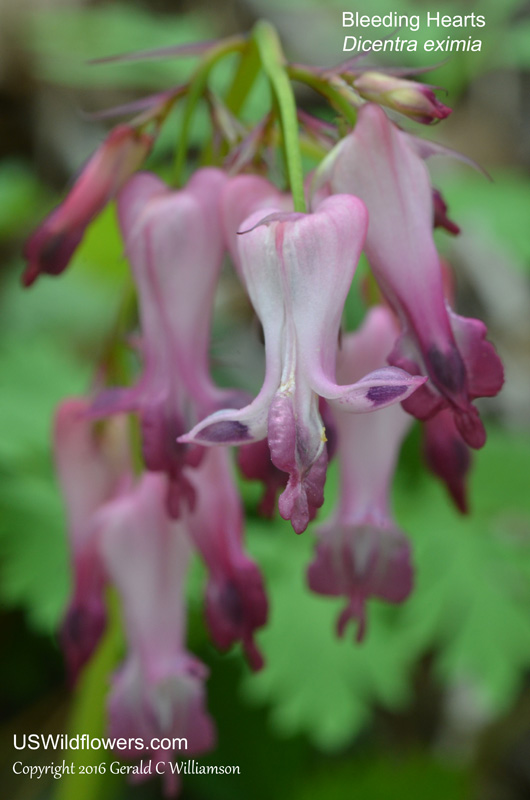
| | Site: Cherokee National Forest, Polk County, TN Date: 2016-April-13 | Photographer: Gerald C Williamson
Nikon D7000 | | The flowers of Dicentra have two nectary spurs at the base. In the case of D. eximia (and some other Dicentra species) those spurs are rounded, giving the base of the flower a heart shape. In the eastern Dicentra species, it shares that characteristic with D. canadensis - Squirrel Corn, but D. cucullaria - Dutchman's Breeches - has spreading, elongated nectary spurs. | | Click on the photo for a larger image
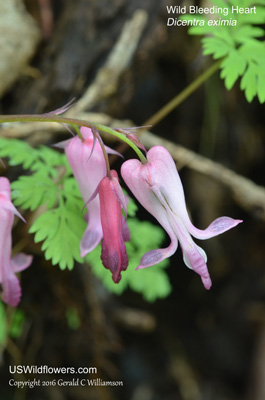
| | Site: Reflection Riding, Hamilton County, TN Date: 2011-April-07 | Photographer: Cindy Williamson | | The inflorescence of Wild Bleeding Heart is a panicle - the flowers are on pedicels irregularly spaced along a stem which may branch off at irregular intervals from the main stem of the inflorescence. While the flowering stem is erect, the weight of the many flowers may cause it to nod to an extent. | | Click on the photo for a larger image
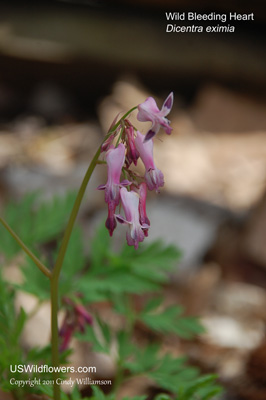
| | Site: Reflection Riding, Hamilton County, TN Date: 2011-April-07 | Photographer: Cindy Williamson
Nikon D60 | | Dicentra eximia grows up to 20 inches tall, with the flowering stem usually longer than the leaves. The leaves are divided 3 times into leaflets and the final leaflet is lobed. | | Click on the photo for a larger image
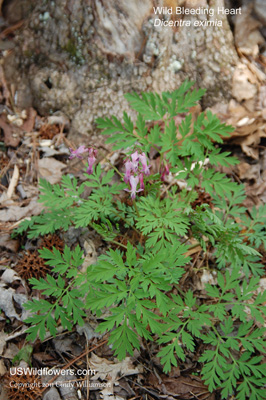
| | Site: Cherokee National Forest, Polk County, TN Date: 2016-April-13 | Photographer: Gerald C Williamson
Nikon D7000 | | The inflorescence is branched, and each branch may have multiple pedicellate flowers. The terminal leaflets are deeply dissected into lobes, but these lobes are broader than the other two Dicentra species with which Wild Bleeding Hearts shares its range. | | Click on the photo for a larger image
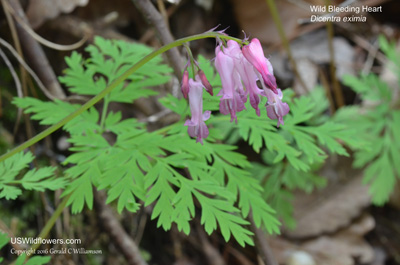
| | Site: Cherokee National Forest, Polk County, TN Date: 2016-April-13 | Photographer: Gerald C Williamson
Nikon D7000 | | The flowering scape(s) and multi-pinnate leaves arise directly from the rhizome. | | Click on the photo for a larger image
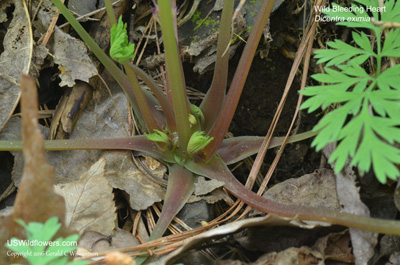
|
References used for identification and information:
|
|
| |
| #ad
|
|








